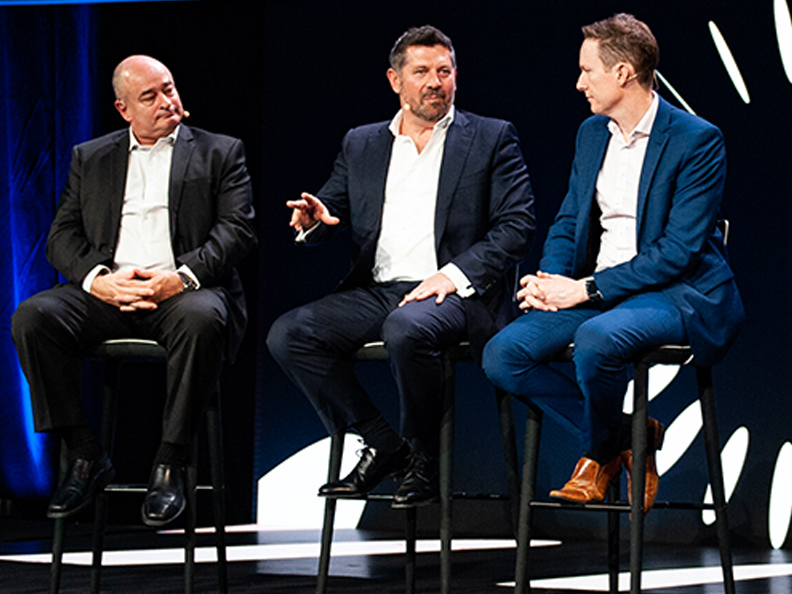Customers are one of the most valuable business assets
Future business revenue and growth can be determined by their loyalty and advocacy. Research indicates top-performing companies make customer experience and advocacy a 'whole of business' approach.
So how can you find new customers in today's challenging market?
"There's no doubt it's tough," admits Stuart O'Brien, CEO of Houston Group. He helps many companies define their value proposition and make successful pitches for new business.
"There are many factors that go into it – timing, luck, experience and reputation. But the flip side is we're also more connected than we've ever been. It's much easier to find a million people in the world than it once was to find a million people in Australia thanks to the reach of the internet and social media."
He says any customer acquisition strategy needs to start with something quite fundamental. "You need to have something people want. It needs to have value and you need to get your timing right. Great organisations understand their customer's psyche and know how to connect at the right time."
Hone your elevator pitch
Once you know you have something worthwhile, you need to be able to tell your story clearly and succinctly.
"Too many people don't spend enough time articulating why they do what they do – they write or talk about their business, not what they'll do for their customer," says O'Brien.
"People don't buy what you do – they buy why you do it," according to author Simon Sinek in his TED talk on great leadership. He says every inspiring organisation understands its core purpose – "why you get out of bed in the morning and why anyone else should care." And they communicate that 'why' first, rather than the 'what' and the 'how'. According to Sinek, this is how you can trigger an emotional response and tap into the part of the brain that controls decision-making.
O'Brien says his core purpose at Houston is "to solve problems" and this sits at the very heart of their product and offer. He says any business can find the ultimate truth that will appeal to every potential customer. "It could be 'better health' for a doctor, or 'protect me and get me out of trouble' for a law firm."
Flip your thinking
One of the most important things you can do to differentiate your elevator pitch is to address the negative first and turn it into your greatest positive. It's a lateral approach that requires you to work out why you might lose the sale and then turn that into why you're going to win it.
"For one firm we worked with, their sales process involved door knocking," explains O'Brien. "We identified the great fear with customers was being trapped in a sale for 20 minutes. So we trained every staff member to do a one-minute pitch – and then we unlocked that tense first moment by offering a $20 voucher if the customer didn't want to hear more after first 60 seconds."
Often, when it's down to you and one or two other firms for a deal, your prospect is looking for reasons not to choose you – rather than reasons to say yes. "There are probably a few firms who can do the same job. These days everyone is busy, they don't want to make the wrong decision and they tend to be more conservative in nature," O'Brien explains.
That's why it's essential to really understand what's happening in the market, who your competitors are and what is keeping your customer awake at night. "Once you know what they want, and what else is on offer, you can be true and clear about what you can do differently," he says.
Word of mouth from within
Your staff can be your best advocates. So every staff member needs to be able to articulate your elevator pitch because everyone they speak to could potentially be a customer or know a customer. What do they say about your company when they're asked where they work at that weekend barbecue? "All networks work, whether it's a school network, a friendship network or professional network," says O'Brien.
It helps if your staff – and particularly your frontline staff in sales and customer service – are able to experience your product or service themselves. That's why retailers give staff employee discounts and restaurants feed staff during meal breaks. If they have a good experience they'll have a reason to 'pay it forward' by sharing that experience with their network and creating a genuine third party referral.
Empowering your networks
Your clients can also be powerful advocates. But how do you create a successful word of mouth strategy? O'Brien says "if you do the right thing by the right amount of people constantly, and deliver what you say you will, your network will repay you with grace and opportunity."
He says marketing today is more about benefits, and giving without expectations, by sharing things of value rather than simply selling. That could be through social content or events.

